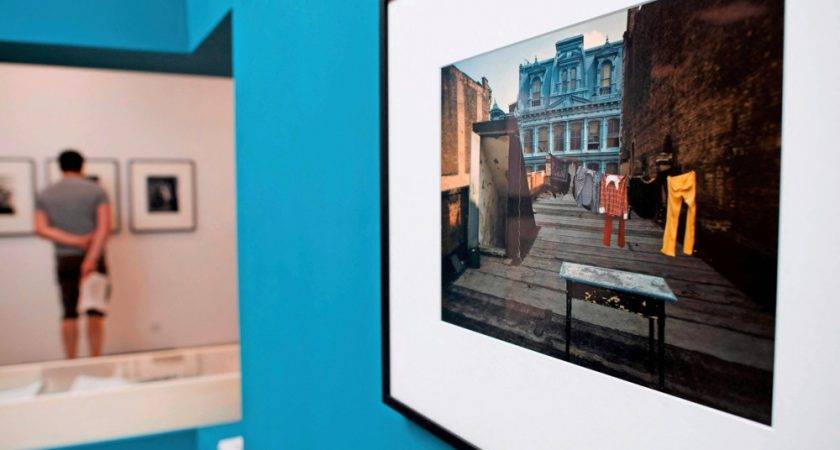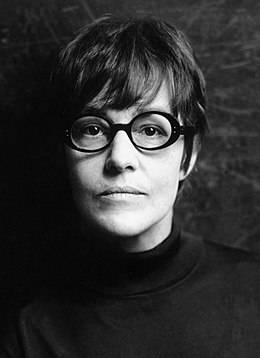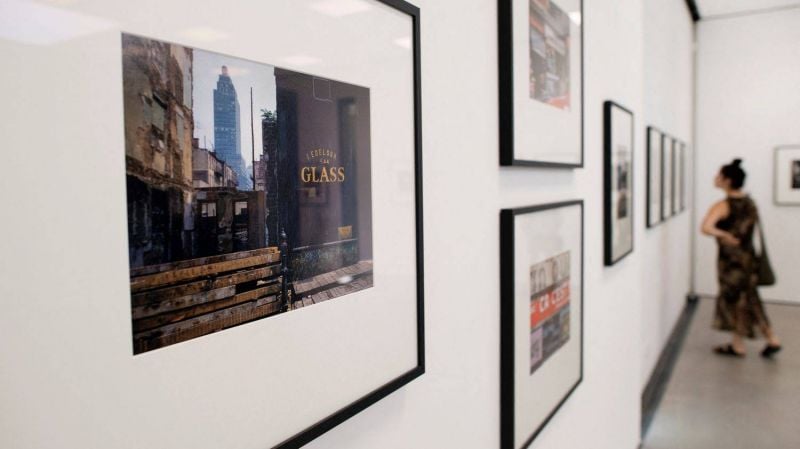Three smiling black women walking out of a Pentecostal church in Harlem, a white policeman in winter gear posing on 59th Street in front of a huge drink ad with the slogan Enjoy Life, a young black man on his bicycle staring at the camera with the Queensboro Bridge in the background.
Evelyn Hofer Photo DR
“A photographer that we haven’t seen in France, it’s important to let her be discovered!” » exclaims Jérôme Sother, co-director of the Gwin Zegal art centre, presenting this little-known artist, very demanding technically and « a pioneer in the use of color ».
Like Klein and Frank, she worked for a while, in her early days, for the world of fashion, notably for Harper’s Bazaar and Vogue magazines. “But the world of fashion didn’t interest him too much,” notes Jérôme Sother.
 Views of New York, by Evelyn Hofer, photographed “with the same care” as human portraits. Photo: AFP
Views of New York, by Evelyn Hofer, photographed “with the same care” as human portraits. Photo: AFP
Technically, when Klein and Frank choose the Leica camera, much more manageable to capture crowds or faces on the fly, Evelyn Hofer remains faithful to the view camera. “Working like this takes time. You have to open your suitcase, mount your tripod, do your composition… This slowness, she must have liked it, ”considers the co-director of Gwin Zegal. “She photographed until 1997, and until the end, she worked with the camera”, he underlines.
Another huge difference: unlike the Leica, it is impossible to take pictures on the sly with the camera. Each photo is negotiated and “requires a real relationship with the model (…)
This is the era of the struggle for civil rights. She goes to the Bronx, to Harlem, a white woman in those neighborhoods, I don’t know if it was very usual, ”questions Mr. Sother.
 Self-portrait of Evelyn Hofer in the 1960s. Photo DR
Self-portrait of Evelyn Hofer in the 1960s. Photo DR
On a human scale
Without renouncing black and white, she quickly introduced color, “reserved until then for advertising or fashion, and excluded from the field of the arts”. She does this long before William Eggleston, born in 1939 and considered a precursor in terms of introducing color into the artistic field, or before Stephen Shore, born in 1947 and enjoying the same reputation.
What she shows, “it’s not the postcard of New York, but the city of small businesses, small people, it’s a New York on a human scale (…) She photographs people simple, not the world of bankers. There is great dignity in all the models,” comments Jérôme Sother.
“Her strength lies more in portraits, but when she photographs still lifes or architectural views, she does it as she would for humans, with the same attention,” he insists.
With her family, Evelyn Hofer left Germany during the rise of Nazism. First for Switzerland, where she learned photography, then Spain. The rise to power of Franco pushes the family this time to the other side of the Atlantic, to Mexico. A few years later, at the age of 24, she left alone to settle in New York where she would spend most of her life.
Often as part of commissions, she also traveled to Lebanon, Istanbul, Dublin or the Basque Country on both sides of the border.
Evelyn Hofer also seized many artists: Sonia Delaunay, Richard Lindner, Andy Warhol (1963), Balthus (1989). Or sometimes, quite simply, their living environment or an evocation, as with Frida Kahlo, Diego Rivera or Marlene Dietrich.
Clarisse LUCAS/AFP
–
Three smiling black women walking out of a Pentecostal church in Harlem, a white police officer in winter gear posing on 59th Street in front of a huge drink ad with the slogan Enjoy Life, a young black man on her bicycle staring at the lens with the Queensboro Bridge in the background.Evelyn Hofer Photo DR “A photographer we never…


